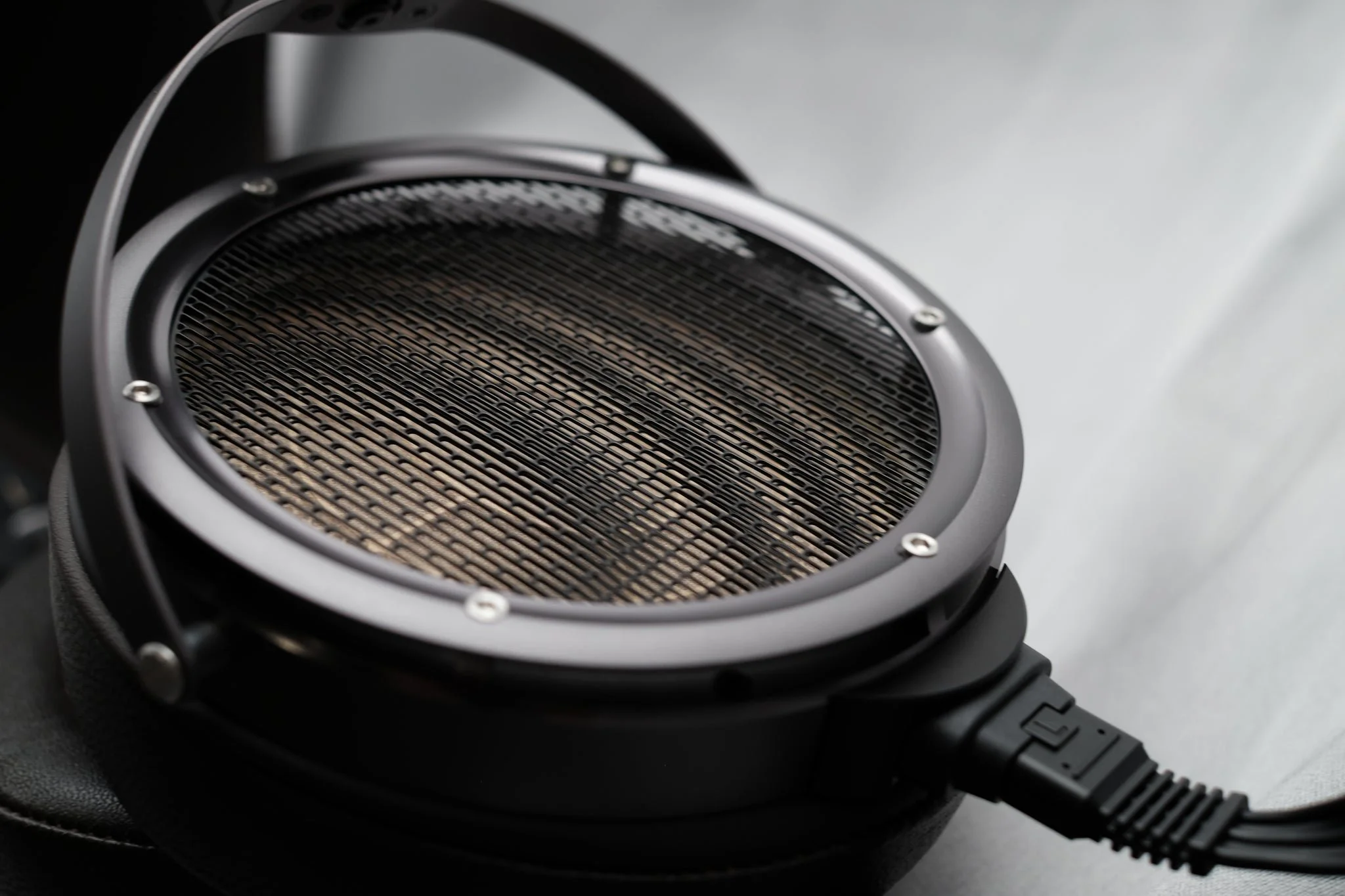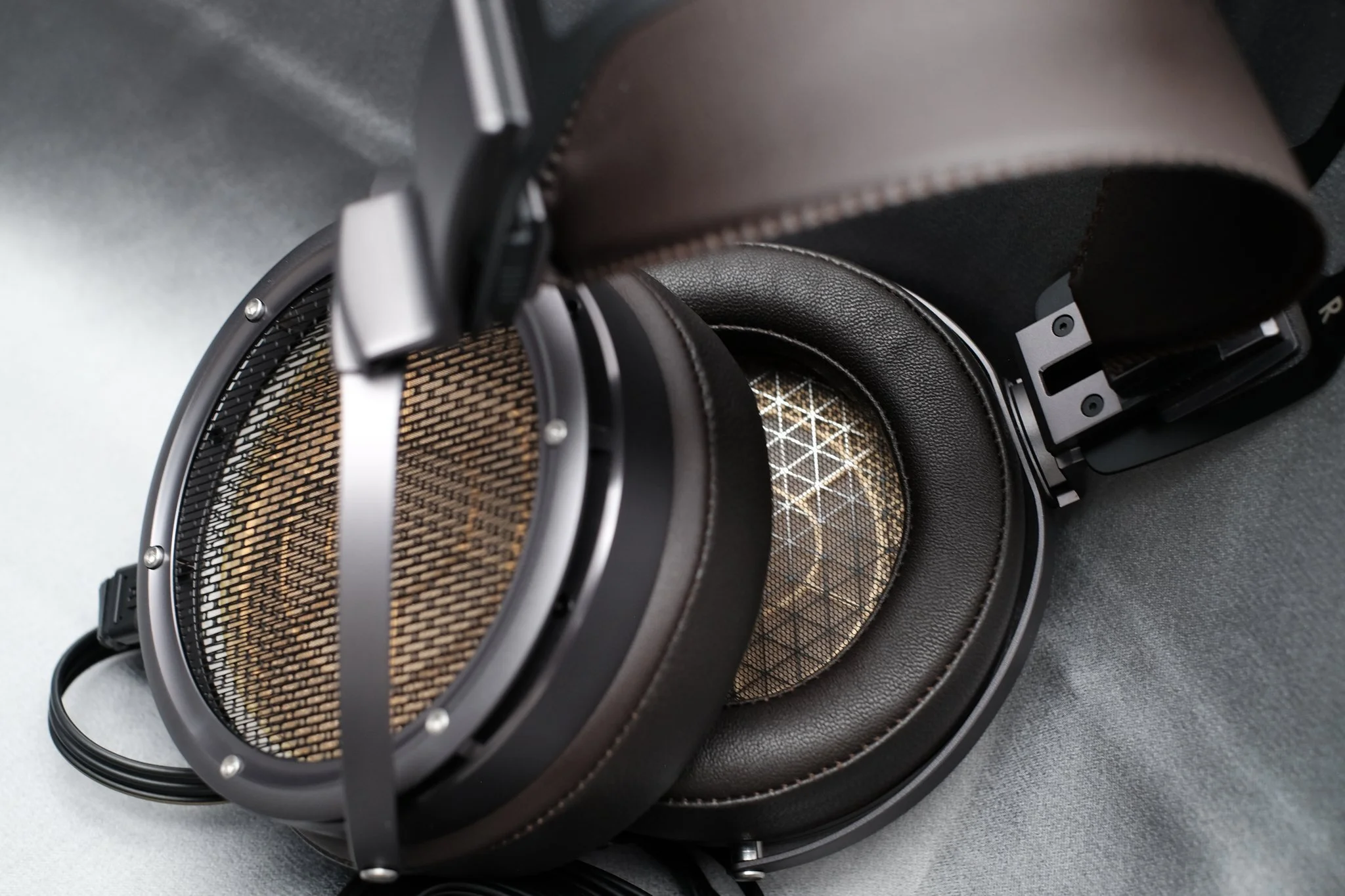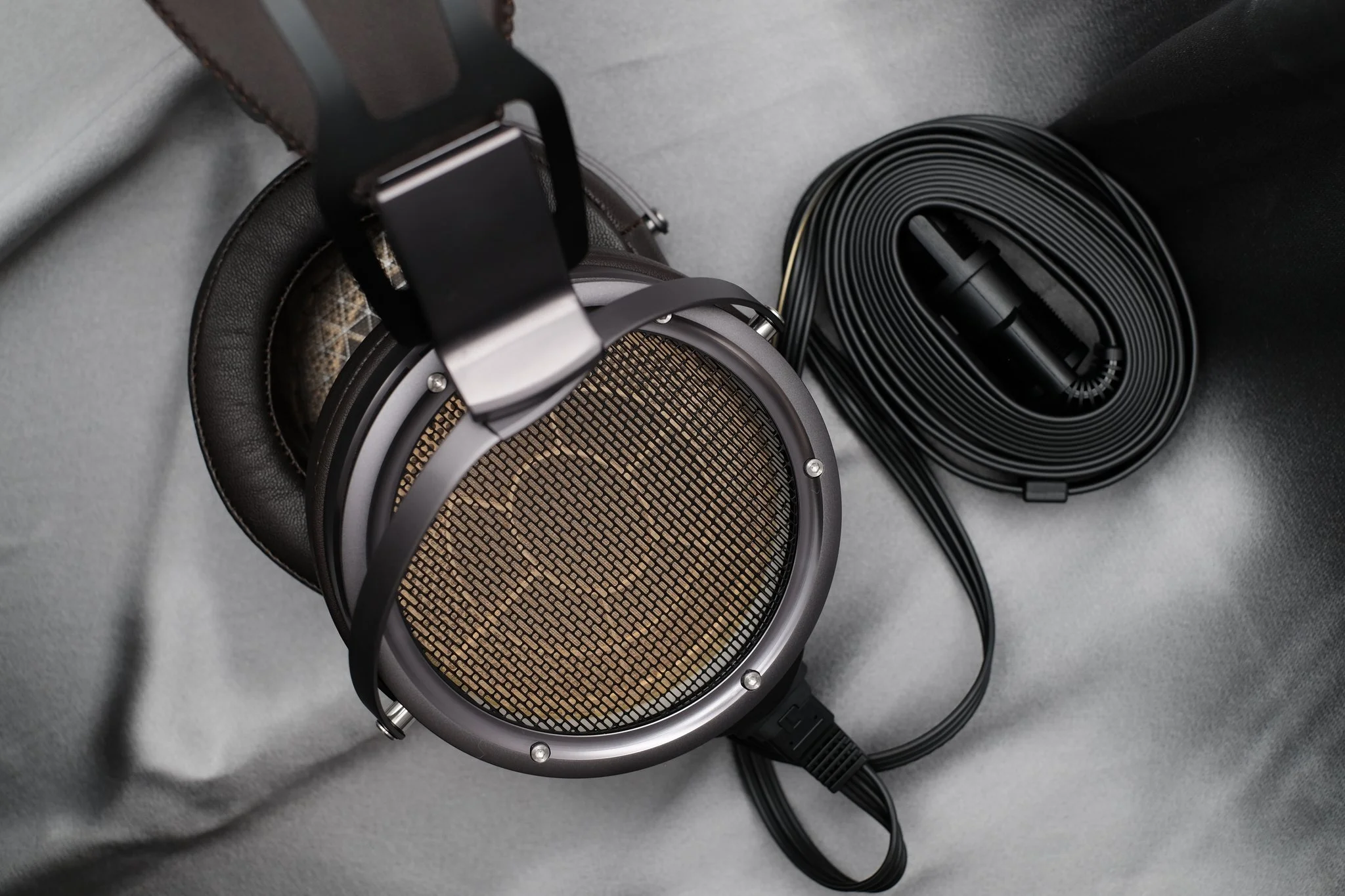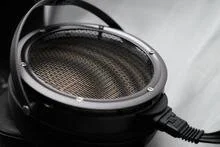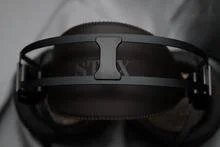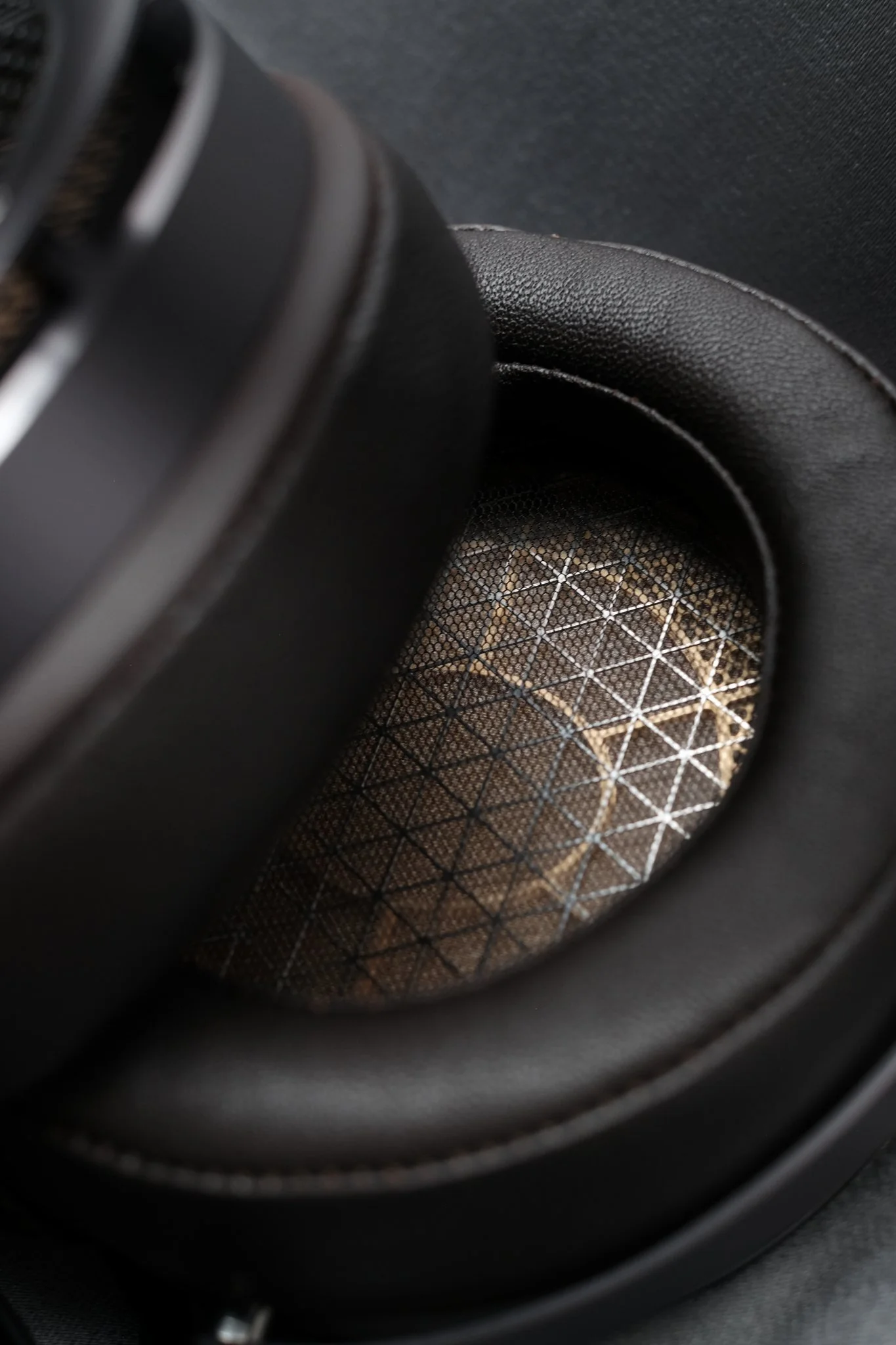STAX SR-X9000 - REVIEW
Electrostatic Musical Nirvana (Full Stop)!
I entered the world of electrostatic headphones and headphone amplifiers a little over a year ago and was surprised to discover that that which I thought an impossibility—incredible “you-are-there” transparency, deep detail retrieval, and captivating musicality—was a truth. This revelation came with the award-winning electrostatic headphone amplifier and electrostatic headphones—the Linear Tube Audio (LTA) Z10e and the STAX SR-L700MkII, respectively. The reviews clearly paint the picture of their performance and my experience with both components.
Since that time I have reviewed a number of electrostatic headphones and headphone amplifiers, which derive from a technology established over 80 years ago that, in my opinion, has not been surpassed to date. As I wrote of my observations after reviewing several electrostatic headphones:
“I can now attest to having had the pleasure of several electrostatic headphones—STAX SR-009S, STAX SR-007MkII, STAX SR-L700MkII, and the Dan Clark VOCE, —in house, at the same time, to take me on my very first electrostatic listening journey. One electrostatic earspeaker [headphone] would, no doubt, have given me a point of reference on a map of electrostatic sound; the combination, however, has laid out a state of sound replete with terrain and points of interest and a rather sublime beauty! It has been an incredible experience.”
Electrostatic headphones not only provide a “you-are-there” experience, but they draw you in as you listen to music which you believed you knew, but did not. You see, so much information is actually missing or, more accurately, buried beneath a ‘floor of noise’ that, in general, headphones and headphone amplifiers simply cannot penetrate. Certainly there are some headphones that can do a relatively good job in their attempts to pierce the noise floor. Electrostatics, on the other hand, pass through noise floors as if they are made of air. And once beyond them electrostatics bring resolution and clarity to that which may have been ‘fuzzy,’ ‘out of focus,’ or ‘hidden.’ Further, they ‘unearth’ volumes of detail that give insight to certain vocal inflections connected to emotion, as well as ambient cues which help to map the inner volume of a given venue—cathedral, night club, hall, etc.—for better three-dimensionality and air and space.
Other commonalities among the electrostatic headphones are their tachyon like transient speed which further increases the feeling and sensations of a “you-are-there” experience. For instance, lightning fast drummers deserve lightning fast transient responses, as well as blistering dynamic swings—soft and easy to loud and busting! Electrostatic headphones are better equipped to do this than other types of headphones because their construction allows them to shed weight—magnets, voice coils, heavy driver assemblies, etc. An apt metaphor would see electrostatics as Peregrine Falcons (200mph dives) to other types of headphones as Cheetahs (61 mph). Yes, a few too many Wild Kingdom shows.
So given this fact, electrostatics, in general, thrive on transient quick recorded live music, and spacious venues with lots going on, across numerous genres—choral, classical, jazz, rock, folk, soul, EDM, etc. If you live in or often visit these genres, well, jackpot with an electrostatic headphone! And, again, all that it will take to understand this very clearly, is a listen to the music that you believed you knew with an electrostatic headphone. Done.
However, after reentering the worlds of dynamic and planar headphones via two recent reviews—Meze Empyrean Elite and the ZMF Atticus—each of which showed some consistency or momentary flashes of electrostatic reproduction, respectively, it was clear that the gap may well be closing between the worlds, after 80 years.
The company currently at the forefront of electrostatic headphone and headphone amplification technology is STAX. STAX, which began operations in 1938, has held forth for over 80 years, creating, improving, and introducing its various electrostatic products, which continually find high praise across the wide world. Its fans remain loyal, while its products, having withstood the test of time, are often considered heirlooms and passed across generations.
I have referred to the abilities of electrostatics, when paired with exceptional upstream components—DACs, streamers, CD players, etc.—as time machines. Time machines not unlike Dr. Who’s tardis that travels across time and space, delivering the Doctor and his companion(s) to this venue then that. In this respect, electrostatics can often render a compelling semblance of being in the actual recording venue. Well, the subject of this review—STAX SR-X9000—amazingly, takes things even further.
REFRAIN: Unlike most reviews, this review will be non-sequential, as it will start with how the headphones actually sound and not the process of physically “undressing” them and/or laying out their various parts, specifications, etc. Think of this review then, as a non-linear movie— In the Shadow of the Moon, Kill Bill, Pulp Fiction, The Queen’s Gambit, etc—that, likewise, starts at the end and winds its way to the beginning.
The Sound
Let me start by saying that the STAX SR-X9000 is, without a doubt, the synthesis of over 80 years of experience and insight gained from success and failure, perpetual research and refinement of brand, and the distillation of this wealth of knowledge into this one singular headphone.
How then does STAX’s latest flagship compare to its previous flagship the SR-009S? The STAX SR-X9000 sits on a quantum shelf above all of its related and near-related brethren—headphones. It is both extraordinary and compelling. You’ll not want to take these headphones off, I certainly didn’t. If there is no STAX SR-X9000 in my daily listening mix, then I am asleep a few hours earlier, each night. The SR-X9000 is highly immersive, in that it will engage you via your very own music, perhaps like no system, no components, regardless of price, has ever been able to do before. Hyperbole? One listen should do the trick.
The SR-X9000 is spacious in the sense that ‘spacious’ would be just the beginning of the description with holographic its ending or punctuation mark. Perhaps it is the larger surface area of its drivers/diaphragms and their configuration (in a nonparallel enclosure) that allows for more spatial/ambient cues, more resulting air, more nuance, and a bass response, which easily sets it apart from its brethren. It is a bass response that travels regularly to the stygian depths of the Holy-Bass-Head-Grail and does so without obscuring up-frequency information/detail at all. This, taken together, was $#@*&%! incredible. And I don’t curse in reviews.
The SR-X9000 is outstandingly transparent and resolving, in a way that will truly show recordings naked in their composition with detail laying about for the having. And yet, despite its prodigious ability to retrieve this detail, the music rendered is always natural, organic, imminently musical, and immersive. Its former multi-award-winning sibling—STAX SR-009S—simply could not keep up. Amazing!
And timbre, texture, tone? Well, they too are exceptional. Instrumental timbres and tones are superbly parsed within a generous and dense mix of instruments, orchestras, large bands, etc. And tone is addictive, compelling, liquid and seemingly edible.
The STAX SR-X9000 sports a soundstage that in true STAX fashion encompasses, swallows, envelops, if you will, its predecessor’s! Its landscape of sound is beautifully layered, imaging/positioning exceptional, and there is a spaciousness and air that gives domain—separation—to performers, and volume to venues.
The STAX SR-X9000 was paired with the STAX SRM-T8000 flagship headphone amplifier (award winner), the LTA Z10e integrated/headphone amplifier (award winner), the Mola Mola Tambaqui DAC (award winner), the DENAFRIPS Pontus II DAC (award winner), and the Roon Nucleus Plus (award winner). An Audience Front Row Cable suite (review coming) was tasked with all wire/cable responsibilities, while a TORUS RM20 provided the power conditioning/regeneration. Again, great bandmates, and you’re traveling across time and space. Eames-Chair-Tardis anyone?
Bass
Foundational. Taut. Lightning-fast.Transparent. Palpable. Eiji Oue’s V. Infernal Dance of King Kashchey (Stravinsky, Reference Recording) thunders in as massed tympani strike a propulsive and foreboding blow, and another, and then several more. The force and weight displayed here its kin electrostatic could not match. And as the orchestra engages, what is immediately noted is that the Minnesota Orchestral Hall has grown in volume, or so it appears via the STAX SR-X9000. In the STAX SR-009S review, the prior flagship of the STAX lineup, I wrote that the SR-009S is as “transparent as a summer’s day is long—unrivaled transparency,” and that the SR-009S “is without analog—peer.” Scratch both statements. The STAX SR-009S now stands both rivaled and surpassed, by its younger sibling—SR-X9000. Change is, indeed, constant. In this movement from Stravinsky’s Firebird, instruments are given their own individual spatial domains among an orchestra of competing instruments, and this in itself bears the quite distinct hallmark of exceptional positioning, layering, and separation. And as the crescendo approaches, there is a deep, foreboding rumble and then an explosion(!) via the concurrent strikes landed upon massed tympani! An electrostatic headphone that does sub-bass with no apologies or excuses or dithering! The STAX SR-X9000 just does it. Wow! And yet, in the quietest of passages it creates an extravagant tranquility, much like its older sibling, but it is even more immersive, nuanced, refined. Now for something that is completely different. David Holland’s “B-40/M23-6K/RS-W” (Emerald Tears, ECM), bass-notes all taut and fast, transparent and resolving, and combined with an astute rendering of tone, this track is revealed as something new. New, despite countless hearings! Did I mention the SR-X9000’s transient speed and how it leaves its multi-award-winning sibling—SR-009S—behind and how immersive it is? Yeah, I guess I did. Well, brilliant! I was only going to do two tracks, but then Marcus Miller’s Power (M2, Concord) slammed in and, I believe, “$%#@#*-*&%$##!,” was my response. No more nuance here just raw, throbbing, chair-dancing, Holy-Bass-Head-Grail grabbing, and I could have sworn that the SR-X9000 gave a sly, sideways smile and a wink. “I can do bass, thank you.”
Midrange
Olafur Arnalds’ “Árbakkinn” (Island Songs, Mercury (Universal France)) opens and there is no artifice, no noise, no distraction, only silence and stillness. From this stillness rises intimacy and emotion and a palpability that conspire to transcend recorded music and transport one to the venue. The SR-X9000 has provided the most touching, most breathtaking rendition that I have yet heard. Reference System 1’s components (see below)—Headphone Amp and DAC and wires, etc. are the same as in the SR-009S’ review. The only variable in this hearing is the STAX SR-X9000. Einar Georg Einarsson’s recital, his in-drawn breath are honest, real, natural, as are the tones of the piano, violins, viola, and cello. And their various timbres are easily parsed, easily resolved, aided by a transparency which even most electrostatics do not possess. “This is something new,” I write in my notes, “and it is not at all subtle.” The birds? Only the best system configurations can do all of the above and then place the birds, who linger just outside of the recording space, in a duo with Einar, from the very first seconds (00:02) of the recording. They sing from beginning to end as accompaniment to Einar’s recital. Suffice to say, that the rendering of “Árbakkinn” by the SR-X9000 and the accompanying reference system is phenomenal, entirely without precedent, and the most immersive experience I have had in the electrostatic world (or any other). I was to write also about the SR-X9000 renderings of Voces8’s “Agnus Dei” (Lux, Decca) and Shirley Horn’s “Beautiful Love” (You Won’t Forget Me, Verve), both of which rose above all prior renderings in the selfsame way as had “Árbakkinn.” Time and space and word limits, however, fought this. Though I am left with the words: Immersive. Transcendent. Palpable.
Treble+
Pristine. Resolution. Boundless. Air. Lightning Fast. These are but a few of the words that remained fixed in my mind after the treble sessions with STAX SR-X9000. While I generally write up a recording or two and on rare occasions three in the review, though behind the scenes numerous treble heavy tracks are used for evaluation. Short of the movie the Natural, however, I have never seen a player/component hit, within a single game, homerun after homerun after homerun, all day long. First up. Dave Brubeck’s “Take Five” (Time Out, Columbia-Legacy) and it’s out of the park! Joe Morello’s Hi-Hats and Ride cymbals, stage left, rise, drop, rise, drop, resonate with distinct timbral accuracy and a resolution and decay so natural, so real, that right now through the SR-X9000 it’s shaming six figure stereo systems, that should be embarrassed to call what they’re doing resolving! Painting a fence with a few spray cans—Schccchccssssssh (the mess!)—perhaps, but not playing music. As per our motto, I shall name no names. Yet this STAX SR-X9000 headphone-based system with its compatriots, relative to the systems I’ve heard, is but a fraction of a fraction of their cost. “Say what?!” Yep, and that’s the truth. Miles Davis’s “Freddie Freeloader” (Kind of Blue, Blue Note) outta the park! Trio Karénine “Verklärte Nacht, Op. 4:11 Breiter” (La Nuit Transfigurée, Mirare) outta the park! Emmanuelle Bertrand’s “Tout un Monde: Énigme” (Dutilleux & Debussy: Works w/Cello, Harmonia Mundi) outta the park! Hilary Hahn’s “Sonata No. 1 in G minor: Adagio” (Hilary Hahn Plays Bach: Violin Sonatas Nos 1 & 2; Partita No. 1, Decca) outta the park!
The Wrappings and Accessories
The STAX SR-X9000 comes in a medium-large printed, matte, mocha-brown box. The box is minimalist, clean, with logo type and product designation and company branding claiming various sides of the box.
The inside container is a beautifully stained, wooden box. The top lifted, one finds the STAX SR-X9000, held between two thick, protective, identical foam inserts. The wooden box is not, however, a travel case. It is instead a show case made from a wood that is said to have a long history in Japan for storing one’s valuables, and for defeating humidity—paulownia wood.
The overall design is clean, the inner wooden box is an elegant, sumptuous touch, though I still long for the hardened, plastic-aluminum travel case of the SR-007A. Life, unfortunately, is filled with those who would care far less for your prized headphones and its nice wooden box than you.
Design—Look, Feel, and Technology
Round. Aluminum. Leather. Stainless Steel. The sum of which come together in a design that is more elegant and sophisticated and rich than the earlier flagship holder. The colors, the patina of the metals, the leather, the headband are a rich deep mocha that is just gorgeous, yet in an understated way. “What?” You say? There’s no bling! Save for the gold colored metal mesh that protects the diaphragms. But even this is done with such…panache.
STAX SR-X9000 is an open back electrostatic earspeaker that, like each of its siblings, loses the magnets associated with planar magnetic headphones and dynamic driver headphones (and loses the coils of dynamic drivers as well). Electricity is delivered across the entirety of the electrodes/stators—thin mylar film diaphragm, sandwiched between two conductive metal plates—and is available on demand. However the diaphragm has changed in this latest iteration. As STAX explains, the SR-X9000 utilizes a four-layer diaphragm—the MLER-3 to which:
“An etching electrode and a metal-mesh electrode are bonded using the diffused junction (thermo-compression bonding). After 2 generations of STAX flagship models, STAX’s manufacturing technology makes a significant contribution to the stable mass production of big round-shaped metal-mesh electrodes. For MLER-3, sound transparency evolved more smoothly than conventional multi-layer fixed electrodes. And the rigidity characteristic resistant to vibration also evolved.”
If the SR-009S sported light-speed transients, as electrostatics are wont to do, the SR-X9000 may well be sporting tachyon-speed—faster than light—transients.
The STAX SR-X9000’s cable is composed of a six-strand, six-nines-copper (6NCu), low capacitance cable for the core wires and six silver-plated copper wires that make up the perimeter. Like all STAX cables the STAX SR-X9000’s cable:
“Uses the conventional wide format parallel structure to lower the capacitance between each wire and finishes with the most suitable structure to drive the earspeaker.”
The various wires are housed within a plastic/rubber sheath. The cable is terminated in a five-prong assembly that allows connection to only electrostatic “energizers” or amplifiers, as electrostatic earspeakers cannot be driven by traditional amplification.
In sum, the STAX SR-X9000 is gorgeous and rather delicious looking, actually. Mocha, remember? Do you like chocolate as much as I do? Hmmmm, not possible. And its comfort is ‘day-long’, as was the case for me during its review when it was worn consistently day after day without effect or ‘headphone head.’
The Specifications
STAX SR-X9000
Type: push-pull electrostatic, oval sound element, rear open-air type enclosure
Frequency response: 7 – 41,000Hz
Electrostatic capacitance: 110pF (including attached cable)
Impedance: 145kΩ (including attached cable, at 10kHz)
Sound pressure sensitivity: 101dB / input 100Vr.m.s. / 1kHz
Maximum sound pressure level: 118dB / 400Hz
Bias voltage: 580V DC
Ear pad: real sheep’s leather (skin-touching portion), high-class artificial leather (surrounding portion)
Cable: parallel 6-strand, 2.5m full length, low-capacity special wide cable
Cable conductor:6N (99.9999%) annealed OFC with silver coating
Weight: 508g (1.1-lbs—including attached cable), 371g (0.8-lbs—without cable)
Drivability
The STAX SR-X9000 was driven easily with every electrostatic headphone amplifier in house, inclusive of the near-entry level STAX SRM-500T.
Conclusion
The new and undisputed flagship of the STAX earspeaker/headphone line is the STAX SR-X9000 electrostatic headphone! And after listening these past weeks, this was perhaps one of the easiest calls that I have made to date. Despite the fact that I have been listening to some truly incredible components from DACs to streamers to planar and magnetic headphones to cables and wires!
Did I mention how extraordinarily immersive the STAX SR-X9000 is? Well, you will experience the sounds, the emotion, the ambiance, the ease, and even the ‘sights’—silverware and dishes clinking, the muttered voices of the inconsiderate, a waitress taking orders, muffled coughs, miscues, etc. It will all seem tangible and will be incredibly new to a great many. It was new to me and I have ‘mad’ years and much experience in this hi-fi thing. One listen.
It is hard to believe that a little more than six months ago I was heaping big praise on what I believed to be STAX’s flagship electrostatic headphone—the STAX SR-009S—of all time! And that it was, in every respect. But as mentioned above, things change. Without further ado, we very highly recommend the STAX SR-X9000 and bestow to it our highest award—the DIAMOND AWARD—for excellence, as a headphone, regardless of driver technology, that is of unparalleled talent and abilities. And apparently, it does not need my Yellow-Chair-Tardis or a fancied Eames-Chair-Tardis, that I have my eye on, to go traveling about time and space to this venue then that. Bravo!
NOTE 1: Please make sure that the STAX SR-X9000 have at least 200 hours on them (8 straight days plus of running music through them) before critical listening or listening for pure, luxuriant pleasure.
NOTE 2: You will need an energizer to power the STAX SR-X9000 headphones. You'll want, without a doubt, the STAX SRM-T8000 ($6090) headphone amplifier, which is its technological and symbiotic mate and also an incredibly talented performer. Though the STAX SRM-700S|T ($3400) could certainly get things moving in a pinch.
The Company
STAX
SR-X9000 ($6200)
STAX
#2101 The L Plaza
367-375 Queen’s Road Central
Hong Kong
+852 2522 6989
cs@staxheadphones.com
https://staxheadphones.com
Yellow-Chair-Tardis


